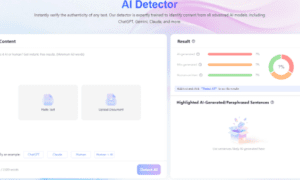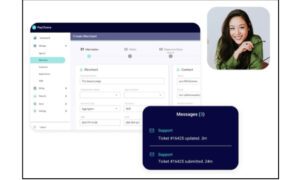Financial reports are essential for establishing trustworthiness and transparency across all industries but especially in the nonprofit community. Transparency in reporting is essential for business owners, stakeholders, investors, and nonprofit donors.
Clearly demonstrating to donors how each dollar is allocated will significantly aid in advancing your mission. Effectively managing donor-imposed time and usage restrictions is another crucial aspect of maintaining transparency. Nonprofits often receive funds with specific conditions, called “Restricted Funds” in accounting for nonprofits. These restrictions dictate how and when the funds can be used. Properly adhering to these restrictions not only fulfills legal and ethical obligations but also strengthens donor trust. Utilizing advanced accounting tools ensures that these restrictions are tracked accurately and reported clearly, providing donors with assurance that their contributions are making the intended impact.
Nonprofit accounting staff may face challenges in tracking detailed program expenditures due to inadequate record-keeping and manual processes.
In this blog, we will examine how purpose-built accounting software for nonprofits can assist with maintaining long-term donor relationships and provide visibility through the software.
The Role of Financial Transparency in Trust Building with Donors
Donors must trust that a non-profit will use their donations effectively for designated programs and purposes.
Clear and accurate reporting ensures financial transparency, enabling donors to understand how their contributions benefit specific communities and providing insight into operational decisions. This builds confidence and fosters long-term partnerships with contributors. A recent study indicates that many organizations are realizing the benefits of moving to cloud-based accounting solutions which deliver reduced costs, increased operational efficiencies, advanced analytics and AI improvements.
That’s why so many organizations are now investing in modern accounting tools that help to gain financial insights and maintain trust.
What Are the Challenges Nonprofits Face in the Reporting System?
The majority of donors in the US seek transparency, but with changing compliance standards and handling multiple funding sources, clarity can be compromised in the activeness of daily operations.
Here are some other challenges that push back on operational transparency:
- Inconsistent reporting formats
The diverse reporting formats mandated by various grant providers frequently lead to the compilation of reports in a fragmented manner. - Lack of financial skills
Smaller organizations may not have an in-house finance team, leaving fiscal reporting duties to team members who lack financial knowledge. - Complex donor rules
Some funding has time and usage restrictions, which can complicate operations. - Outdated systems
Nonprofits with outdated systems struggle to provide accurate, quick financial figures, making it hard for donors to interpret results. - Data entry errors
Manual data entry and spreadsheet workarounds can cause errors in a non-profit’s data due to rushed efforts to meet deadlines. - Time Limitations
Nonprofit accounting teams often face time constraints and complexities in managing multiple programs, leading to delays in financial reporting.
What Are the Smartest Ways to Earn Donors’ Trust?
Trust increases when individuals are adequately informed, treated respectfully, and engaged with the mission. Likewise, donors require detailed information about the impact of their contributions and reassurance that their funds are managed responsibly.
Here are some smart ways your nonprofit can gain donor’s trust:
- Share clear reports
Use simple, easy-to-read reports that demonstrate fiscal responsibility. - Simplify fund breakdowns
Show how donations support specific programs, operations, and initiatives. - Give impact updates
Share results, even the minutest wins, so donors feel connected to the work. - Show audit proofs
Provide audited financial reviews and reports to demonstrate transparency through independent verification. - Share data-backed info
Providing data-supported information enhances the credibility of your reports. Presenting precise figures enables donors to comprehend the results and outcomes that underlie the narratives. - Host regular briefings
Hold online or in-person sessions where supporters can ask questions and interact with your team directly.
While these are some simple ways to help you maintain good relations with your donors, you can also consider tips to keep donors interested in your nonprofit organization.
What Makes Donors Lose Trust in a Nonprofit – Mistakes to Avoid
Donors’ belief in your cause can fade due to communication issues. Here are key mistakes to avoid:
Unclear or delayed financial reports Delays cause doubts about fund usage.
Mismatch in communication: Inconsistent messages across emails, reports, and websites create confusion.
Lack of regular updates: Infrequent communication makes donors feel neglected.
Impersonal messaging: Generic messages make donors feel unimportant.
Missing transparency and honesty: Lack of clear communication leads to misunderstandings.
No clear connection to impact: Donors need to see their support’s effect on your mission.
Final Thoughts
Trust grows from clear communication and transparency. Being open about the use of donations helps maintain trust.
An accounting system built for nonprofits streamlines reporting, reduces errors, and allows the team to focus on their goals. Transparent communication with financial supporters enhances trust, regardless of resource limitations.

































